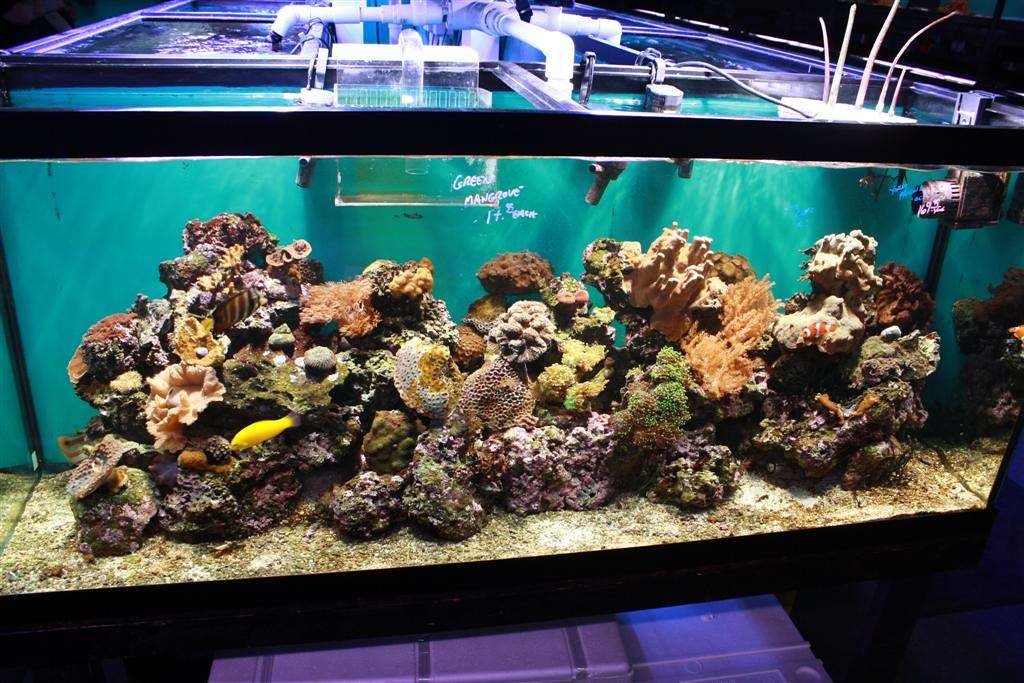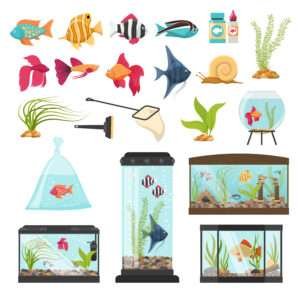
How to set up a saltwater aquarium (beginning tips)
Yes! Now more than ever, it’s easy to set up a saltwater tank. If you have the right tools and know what you’re doing, you can set up your tank in hours. It will be easier to take care of ocean fish than freshwater fish in a tank or pond in your backyard.
Things to Buy for a New Saltwater Tank
For a pair of clownfish, a 20-gallon tank is a good starter tank that you can put on your short list of things to buy.Filter Heater for rock and sand LED Light Salt Mix, Adding Bacteria
1) Choose a spot.

Choose a place in your home where everyone can see the tank. This will make your living space look better and encourage your family to connect with it. Don’t put it in the basement or somewhere else where you might forget about it. There are some important things you should think about when picking a spot for your tank.You should first put your tank somewhere that gets a lot of foot traffic. This will help it get the care it needs.
Second, keep the plants out of direct sunlight, which can make algae grow too much.
Thirdly, the tank should only be put on the second floor or somewhere that might be hard to keep clean.
Lastly, make sure there is an outlet close where you can plug in all the tools you need.
2) Put together the tank and stand and make sure they are level.
It is very important to make sure that the fish tank and its stand are level from front to back and side to side when setting up the tank. After adding water, it can be hard to level the tank because of its weight. Before adding tools and filling it up, it’s best to make sure the tank is level.
Put the tank and its stand where they will stay. Check the tank from front to back, side to side, and across the corners with a level. If the tank isn’t level, use shims made of wood or plastic to change the stand’s height until the tank is level. This is very important because a tank that isn’t level can put stress on the glass, which can cause cracks or even cause the tank to break completely.
Smaller tanks can be put easily on bookcases, counters, and strong furniture or cabinets. But bigger tanks need to be on an aquarium stand that is made just for them so it can hold their weight. Keep in mind that one gallon of saltwater weighs about 8.6 pounds, so the total weight of your tank can add up fast.
3) Set up the tools
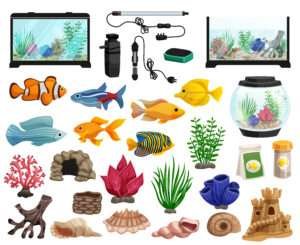
Make sure to put the surge protector high up on the tank stand or wall, away from the ground, so water doesn’t get on it. There should be at least one or two plug outlets that are just for your tank. When the tank is full of water and ready to go, plug in your gear.Carefully arrange the rocks and try out different shapes or groups to see what looks best. Putting in fake corals or other decorations is a fun way to make the tank look nice and give your fish a comfortable place to live.
Put in the rocks and sand first, then the pumps, filters, heaters, and lights. Lastly, the power cords should be arranged and locked away so they aren’t out in the open or dangerous.
4) Add salt water.
It’s best to mix the saltwater in a different jar. A 5-gallon bucket works well and is simple to move around. You can also buy saltwater that has already been mixed in 5-gallon plastic carboy-style jugs from a nearby fish shop. Just remember to keep the threaded caps so that you don’t make a mess when you’re moving them.
Use RO/DI water to mix the dry salt with. There is RO/DI water for sale if you don’t have one at home.
Put a small powerhead or pump in the bucket to help the saltwater mix better. This not only helps break up the salt mix completely, but it also adds air to the water, making your tank healthy. If you want, you can also use a heater in the bucket to get the water to the right temperature, which is 76–78 °F.
To make sure your tank has the right amount of salt, you must carefully follow the directions for adding the salt mix. Adding about 1/2 cup of salt mix per gallon of fresh water is usually how this is done. To find out how salty the water is, use a refractometer or a glass hydrometer.
More salt should be added if the amount of salt needs to be raised. Add more fresh RO/DI water if you need to lower the salt level.
5) Fill the tank
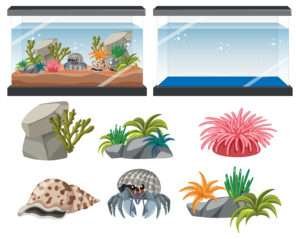
Pour the water into the aquarium tank slowly so as not to make a mess. If you want to keep the sand from moving, don’t pour water straight on it. But dumping water over the rocks can help spread the flow out. Alternatively, put a plate on top of the sand and pour water over it until the tank is full enough to be safe.
Once the tank is full, the next step is to begin spinning. To do this, good bacteria must be grown in the tank so that fish can live there safely. To get this process going faster, you can add germs. But the cycling process can take up to 4 weeks to finish. It is important to start the nitrogen cycle when setting up a new tank so that your fish will be safe there. Live bacteria that break down nitrogen can be added to the tank to do this. Ammonia, which is found in fish waste, is deadly. These bacteria help change it into less dangerous chemicals. The fish will not be at risk of getting sick from ammonia because of this. Over time, the good bacteria will slowly spread to all areas inside the tank, including the sand, rocks, and bio-media. This will make the tank a healthy and safe place for your fish to live.
6) Put in fish
It’s important not to put too many fish in your tank. Instead, add fish slowly. One small fish, like a clownfish, can live in a small tank without any problems. The fish should be safe from ammonia poisoning because of the live nitrifying bacteria. Adding small creatures like hermit crabs, cleaner shrimp, and Astrea snails can also help clean up food scraps and keep algae from growing in the tank.
7) Maintenance every day
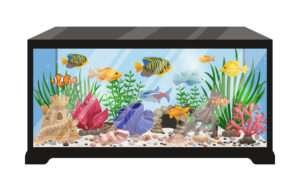
Every day, it only takes a few minutes to clean this small tank. When you feed your fish, give them just the right amount to eat in one minute. The hermit crab will search for any food that is left over. Also, you should add fresh water to the tank every day to make up for the water that evaporates. Keep an eye on the water level in the rear pump room and add fresh water to the tank every day to keep the level stable. Also, don’t forget to wipe down every day the algae that starts to grow on the tank walls.
Every week, you should take out 10% of the saltwater from your tank to keep it stable. This is easy to do in small tanks; just use a pitcher to take out one gallon of water at a time and add clean saltwater in its place. To keep the water from getting bad, this water swap should be done every day or at least once a week. Every week, you should clean and change the filter sock to keep the water clear and get rid of waste quickly.
In short
There is a lot of study and planning that goes into starting a new aquarium, especially a saltwater tank. There isn’t much room for error with these tanks, so it’s important to plan and study carefully. You might run into problems later that could hurt or kill your fish if you don’t plan well or decide on the spot.
You should first choose which fish you want to keep. Then, think about things like the aquarium’s size, its equipment, its decorations, its floor, its food, its filters, and its lights. People who are just starting out should start with hardy fish because they can handle mistakes better.
Once you have a plan, setting up is pretty easy. It’s important to keep in mind, though, that riding can take a long time. Still, when you finally meet your fish, you’ll see that all the time and effort were worth it. Being patient is important if you want to make sure your fish are healthy and happy.


